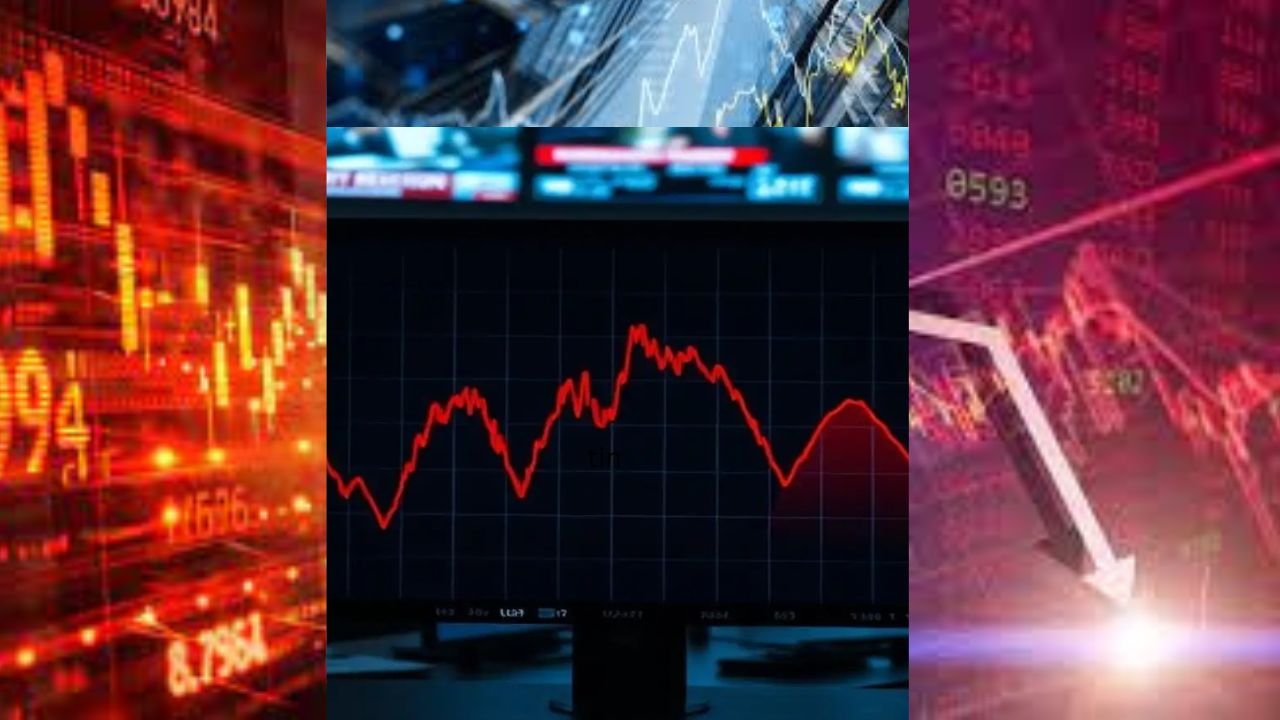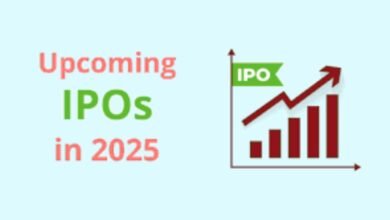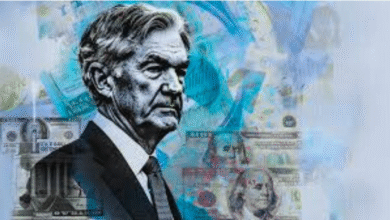Europe’s Tightrope Walk: Why Stocks Climbed a Wall of Tariffs, Bad Data, and Earnings Chaos
A deep dive into a market at war with itself, where a Trump tariff twist saved tech, a crucial rate cut loomed, and individual corporate stories painted a profoundly mixed picture of Europe's future.

There are days when the stock market spins a tidy, neat yarn. And then there are days like today.
The European markets were a lesson in contradictions today, a battlefield of mixed signals sending investors scrambling a dozen directions simultaneously. It was a day that didn’t so much feel like a trend as a desperate, high-wire tightrope walk over a precipice of uncertainty.
On the other side, you had the weight of fear and gloom’s heavy chains. New, bristling U.S. tariffs stood poised to choke off world growth and rekindle the flames of inflation. The very heart of the continent’s industrial muscle, the German economic motor, was spluttering, with industrial production at a record low since the pandemic. And in London, the FTSE 100 was hovering, holding its breath before a Bank of England announcement that cried economic vulnerability.
And still, the pan-European STOXX 600 index rose 0.6%.
How? How does a market move forward when the macro-economic winds are blowing a gale in its face?
The key is in the chaotic, complex, and intensely human drama that goes on behind the scenes. It is in one vital exemption in U.S. tariff policy that sent a tidal wave of relief across the continent’s most precious tech industry. It is in the breathtaking resilience of a global shipping behemoth that is bucking recession jitters. And it is in the individual fate of banks, defense contractors, and hotel chains, each with its own distinctive tale.
This is not a tale of “market up” or “market down.” This is the tale of a warring market. Today, we are your war correspondent, trekking into the trenches to find out what the crucial battles won and lost are. We will crack the code of tariff confusion, diagnose European economy health, and uncover why, on a day full of reasons to sell, investors ultimately had just enough reason to buy.
Section 1: The Three-Front War – The Macro Headwinds Knocking on Europe’s Door
To appreciate the market’s climb, we must first understand the sheer weight of the forces pushing it down. Investors today were staring down three major threats simultaneously.
Front #1: The Trump Tariff Tsunami
The spectre of a global trade war that had haunted markets for years suddenly came roaring back to life. The administration’s new tariffs weren’t an encouraging nudge; they were a sledgehammer. The fact that they were now in effect on a dozen trading partners sent a shiver down the market instantly. It wasn’t just about the figures; it was about the pillars of the global economy.
The Growth Threat: Tariffs are a tariff on international trade that increase the cost of goods and complicate elaborate supply chains. This will immediately threaten to reduce global economic growth, which is unwelcome news for Europe’s export-driven economies.
The Inflation Hydra: Increased prices for imported goods translate to one thing: inflation. This leaves central banks in a no-win situation, having to decide between combating inflation with high interest rates (which annihilates growth) or goosing a weak economy (which allows inflation to get out of hand).
The Swiss Shock: To add a dash of geopolitical drama, there was slammed an astonishing 39% tariff on Switzerland. The spectacle of the Swiss President departing Washington without even a sit-down with senior officials was a graphic reminder of the new, ruthless face of international trade relations. It announced that no one was immune.
Front #2: The German Engine Sputters
If the tariff announcement was the outside threat, the German announcement was a profound, internal wound. New figures indicated that German factory production declined last month to its lowest point since the depths of the pandemic.
This is no trivial piece of data. Germany is the European manufacturing powerhouse. Its health is a gauge of the continent’s overall health. When the German motor coughs, the entire European train reduces speed. The explanations given—lackluster foreign demand and rising Chinese competition—are not transitory problems. They are long-term, structural ones that throw a dark shadow over hopes for continent-wide recovery.
Front #3: The London Fog – A Rate Cut Looms
While most of Europe edged up, Britain’s blue-chip FTSE 100 index fell 0.3%. Why? Because the looming Bank of England meeting, when policymakers were widely expected to lower interest rates.
A rate cut is a double-edged sword. It is a stimulant to make borrowing cheaper and spur economic activity on the one hand,. Alternatively, it is a flashing red warning that the economy is so ailing it requires life support. The FTSE was spooked by this dire reality. The market was preparing for an official acknowledgment that the UK economy is precarious, a view that quickly translates across into the wider European psyche.
Together, these three fronts created a somber picture. A trade war in the making, Europe’s biggest economy getting weaker, and the UK on the verge of having to acknowledge its own weakness. On all logical grounds, the market ought to have been in deep red.
Section 2: The Twist in the Tale – How a Semiconductor Exemption Saved the Day
So why wasn’t it? The reason is to be found in one, huge plot turn that lay hidden in the tariff statements—a turn so huge it totally transformed the market mood.
President Trump declared a devastating 100% tariff on chips imported from abroad. For an instant, this was a death blow for the worldwide tech industry. But then came the golden get-out clause: the tariff would not cover firms producing in America or those who have pledged to do so.
A tsunami of relief swept over the European technology sector.
This subtlety was crucial. It was what allowed a firm such as Apple, which has bet big on making things in America, to keep buying its high-tech ingredients from overseas suppliers without paying a penalty. And this, in turn, was salvation for Europe’s own chip champions, who are essential cogs in this world supply chain.
The backlash was immediate and charged:
ASML Holding (ASML.AS): The Dutch giant that produces the world’s most sophisticated chip-making machines, roared more than 2% higher.
BE Semiconductor (BESI.AS): Another chip ecosystem leader, rose more than 2%.
SAP (SAPG.DE): The German software giant, a proxy for business tech spending, did the same with more than 2% rise.
This wasn’t a rally in three stocks alone. The technology industry is the heavyweight of the new European market, with its highest-growth and highest-valued companies. When tech gains strength, it has the gravitational pull to pull the whole index along. The solace in the semiconductor area was so deep that it served as a strong counter-narrative to all the macro doom. It was a signal that, even in a trade war, there would be winners and nuanced outcomes.
This single piece of good news was the spark that allowed the STOXX 600 to start its perilous tightrope walk, giving investors just enough confidence to look past the abyss below.
Section 3: The Earnings Battleground – A Microcosm of a Conflicted Economy
If macro news was somber and tech news was over-enthusiastic, the corporate earnings reports were a soggy, hand-to-hand combat between hope and dismay. Examining these individual company accounts provides the most accurate representation of the actual economy.
The Wounded (Signals of Weakness):
Rheinmetall (RHMG.DE): The German defense titan, a stock that ought to be doing well in a world of geopolitical uncertainty, fell 5.2%. Why? It fell short of sales estimates due to a slowdown in German defense orders. This is a strong micro-level validation of the macro-level issues within the German economy.
Telecommunication Troubles: Giants like Freenet AG (FNTGn.DE) and DT Telekom (DTEGn.DE) fell 5.3% and 3.6% respectively after their results. This signals weakness and pressure in a core domestic sector, suggesting consumer and business spending is tight.
Merck KGaA (MRCG.DE): The German drugmaker fell 1.4% after being hit by a weaker dollar. This highlights the currency risks that multinational companies face, another layer of complexity for investors.
The Resilient (Pockets of Strength):
Maersk (MAERSKb.CO): In a shocking denial of fears of global recession, the Danish shipping giant gained 2.5% after projecting higher full-year profit forecasts. Maersk is a barometer for international trade. For it to be upbeat amid fresh tariffs is a massively strong bullish indicator that demand is greater than many anticipated.
Raiffeisen Bank (RBIV.VI): The Austrian bank was the standout of the STOXX 600, soaring 10.3%. Its surge followed a Russian court’s removal of a freeze on its Russian subsidiary’s shares. This was a company-specific geopolitical victory, a reminder that not all tales are connected to the overall economy.
InterContinental Hotels (IHG.L): The hotel chain climbed 6% after recording robust revenue and holding on to its goals. This suggests the long-term vigor of the post-pandemic shopper, who remains keen to spend on vacations and experiences.
This split result on the earnings side is precisely reflected by the wider data. Of the STOXX 600 firms which have reported, 53% have topped estimates. As is evident from LSEG data, this is a hair less than the average quarterly run rate of 54%.
In the words of one top market strategist, the quarter has been “negative but not as bad as expected.” The market had anticipated a disaster, and what it received was merely a C+ report card. In today’s skittish climate, “not as bad as feared” was adequate for a rally.
Conclusion: Navigating the Noise in a Stock-Picker’s Market
So, what is the ultimate lesson from Europe’s mad trading day?
It’s that we’re no longer in an era where “a rising tide lifts all boats.” The tide is turbulent, complete with treacherous cross-currents. Wednesday, the general STOXX 600 index was able to keep its head above water, sustained pretty much by itself by the relief rally for tech. But just below the surface, a furious battle was being fought.
The day’s story was a struggle between the ugly macro-economic fact of tariffs and soft data, and the particular, potent micro-stories of life in business. A tariff waiver on semiconductors was stronger than soft German industrial data. A positive outlook by a shipping behemoth in Copenhagen overwhelmed the negative report from a defense firm in Düsseldorf.
This is the very definition of a stock-picker’s market.
The easy profits from surfing a broad economic upturn are done. The future is for investors who have the ability to see through the headline index, drill down into the detail, and know the specific tales of the businesses they have in their portfolios. It takes the ability to ask the correct questions: Is this business a Rheinmetall, held captive by bureaucracy in government? Or is it a Maersk, managing to survive in the midst of turmoil? Is it subject to the whims of tariffs, or sheltered like an at-home hotel chain?
Today, the European market refused to tell us clearly what its future holds. What it told us was much more precious: in an age of utter uncertainty, the true tale is not in the index, but in the stocks.
(Disclaimer: This article is for informational and educational purposes only. It does not constitute financial advice or a recommendation to buy or sell any securities. Please consult with a qualified financial advisor before making any investment decisions.)





